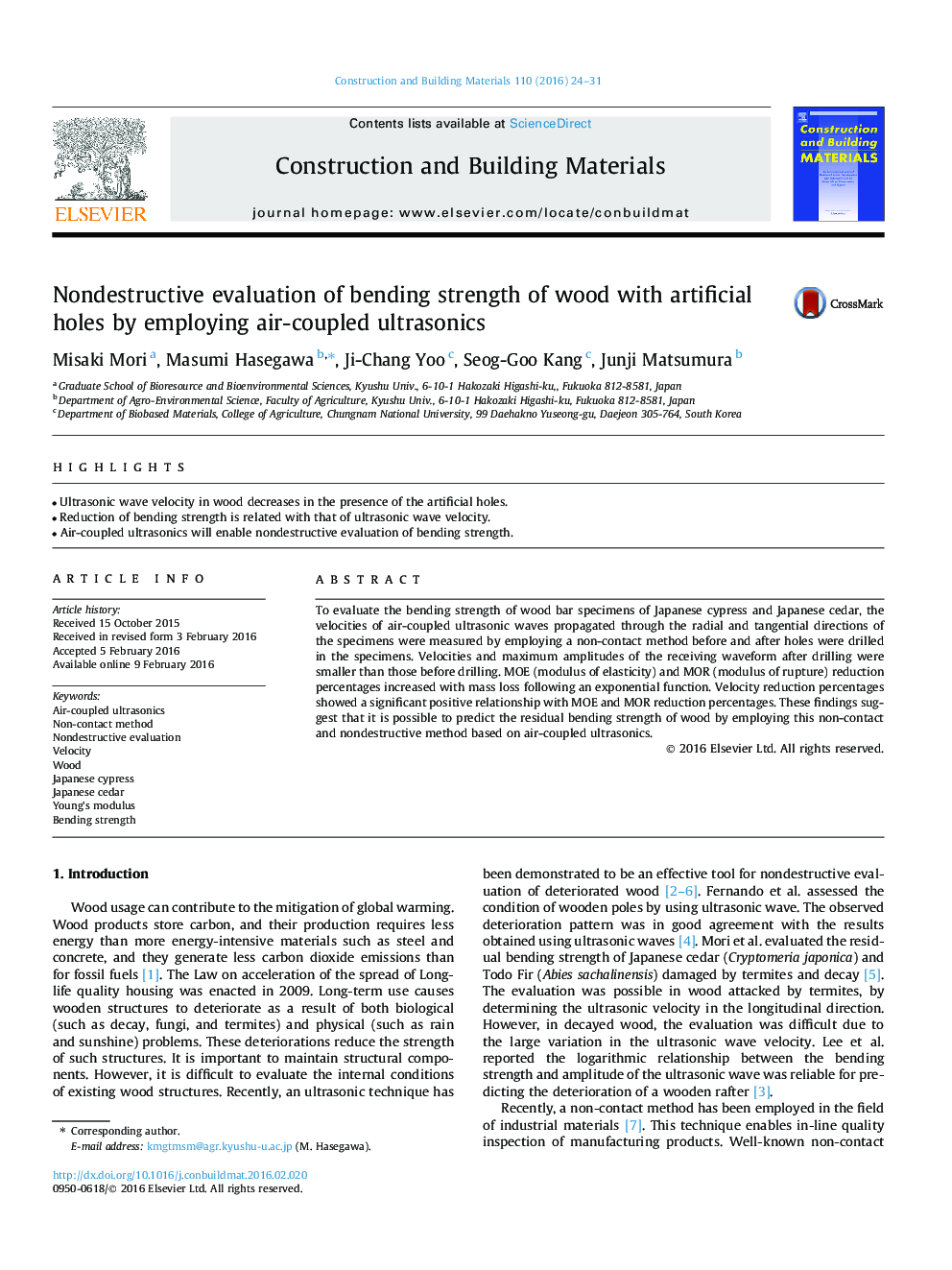| کد مقاله | کد نشریه | سال انتشار | مقاله انگلیسی | نسخه تمام متن |
|---|---|---|---|---|
| 256055 | 503540 | 2016 | 8 صفحه PDF | دانلود رایگان |
• Ultrasonic wave velocity in wood decreases in the presence of the artificial holes.
• Reduction of bending strength is related with that of ultrasonic wave velocity.
• Air-coupled ultrasonics will enable nondestructive evaluation of bending strength.
To evaluate the bending strength of wood bar specimens of Japanese cypress and Japanese cedar, the velocities of air-coupled ultrasonic waves propagated through the radial and tangential directions of the specimens were measured by employing a non-contact method before and after holes were drilled in the specimens. Velocities and maximum amplitudes of the receiving waveform after drilling were smaller than those before drilling. MOE (modulus of elasticity) and MOR (modulus of rupture) reduction percentages increased with mass loss following an exponential function. Velocity reduction percentages showed a significant positive relationship with MOE and MOR reduction percentages. These findings suggest that it is possible to predict the residual bending strength of wood by employing this non-contact and nondestructive method based on air-coupled ultrasonics.
Journal: Construction and Building Materials - Volume 110, 1 May 2016, Pages 24–31
